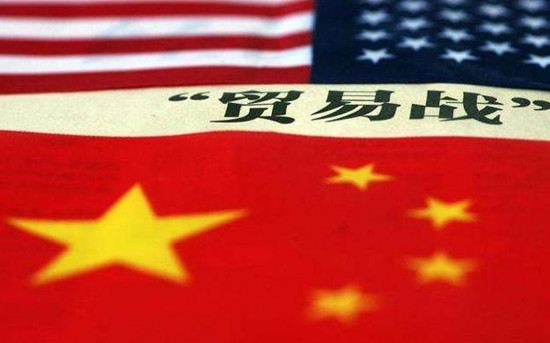America’s muddled “trade imbalance” shows bias
The United States has found many reasons for its unilateral trade protectionism. The so called “trade imbalance” theory is one of them.
However, it’s often said that those who speak well are no better than those who listen intently. The same can be said for international trade, which is about mutual exchange and willingness. Both sides of a trade agreement will surely discontinue unless there are profits or beneficial domestic results.
Therefore, with so many years of trade already passing by, why has America only just become obsessed with a so called trade imbalance? More paradoxically, as one of the strongest global superpowers, how has America seemingly become the biggest victim of such an imbalance? Could it be that the former occupants of the White House were happy to sell their country’s interests, or were too weak to argue with their trade partners?
The White House holds two main arguments for why international trade is currently imbalanced. Firstly, the scale of America’s trade deficit with other countries is too large, to such a degree that they have to be dealt with immediately. Secondly, the U.S. suggests that trade partners do not treat the country fairly in terms of policy, which in turn makes U.S. economy, industry and employment all suffer.
We should use figures and facts when talking about trade, but unfortunately the American calculator seems to get it wrong when dealing with statistics.
Taking Sino-U.S. trade as an example, according to a working group of experts from Chinese and American governments, U.S. statistics regarding the country’s trade deficit with China have been overestimated by 20 percent. More unconvincingly, the trade statistics quoted by the U.S. government only include commodity trade and do not reflect trade in services. However, the U.S. service sector accounts for over 70 percent of its GDP. How has the country lost such a large sum when calculating their trade accounts? It seems that if it were calculated, the so called “trade imbalance theory” would be even more unsustainable.
The U.S. is unwilling to discuss commodity and service trade together, but even when it comes to commodity trade itself, the U.S. should take a closer look at how it has arrived at its current situation. When it comes to importing goods, the U.S. buys without hesitation, however when it comes to exporting its own products, the country is not nearly as willing. If this kind of mentality continues then the trade deficit will continue to expand, and there’s no doubt as to why.
The percentage of Chinese current account surplus in its GDP has fallen dramatically over the last decade, from 9.9 percent in 2007 to 1.4 percent in 2017. However, it’s telling that China’s trade surplus with America continues to rise.
Business is accompanied by figures, and these figures are always changing. Even though certain statistics don’t look good for America, it must be clarified that trade deficit is not equal to interest deficit. The Research Report on China-U.S. Economic and Trade Relations released by the Ministry of Commerce, People’s Republic of China (MOFCOM) shows that in the global value chain, trade surplus is reflected in China, while interest surplus is reflected in America.
According to statistics, 57 percent of China’s commodity trade surplus came from foreign companies last year, 59 percent of which came from processing trade. China only earns a small amount in processing fees, while the U.S earns a big profit from design, parts supply and marketing. In the China-U.S. economic and trade cooperation, America also imports a large number of low-cost labor-intensive products from China, which truly benefits American consumers and also helps the U.S. curb domestic inflation.
Not actively pursuing a surplus has always been a trade principle of China. To keep up with the growing demands of its people and high-quality development of its economy, China is actively expanding its imports. China voluntarily cut tariffs for daily consumer goods on July 1, involving 1,449 taxable items with an average decrease of 55.9 percent.
Muddled accounts are not always calculated by the confused, but are often created by the smart, America’s “trade imbalance” being the perfect example. From advocating “free trade” to “fair trade,” the U.S. has only one purpose, to push through its “America first” agenda, making the whole world pay the bill for its world domination.
According to America’s so called “fair trade” assertion, every country is required to keep a complete consistency with America in regards to the tariff of specific products and the market access of all industries, creating absolute equivalence. In the history of international trade, when and among which countries does this absolute equivalence and opening-up exist?
Tariff levels and degrees of opening-up are always closely related to a country’s stage of development, endowment of resources and industrial competitiveness. America’s so called fair trade actually denies the different stages of development, which will bring greater impact to the economy and industries of developing countries, which in turn is sure to lead to greater inequality.
Unilateral protectionism is like closing yourself in a dark room. Although you have escaped the wind and rain, you have also been isolated from sunshine and air. What is done about international trade can only be negotiated by all countries involved, leading to mutually beneficial and win-win results.
Source:People’s Daily Online








